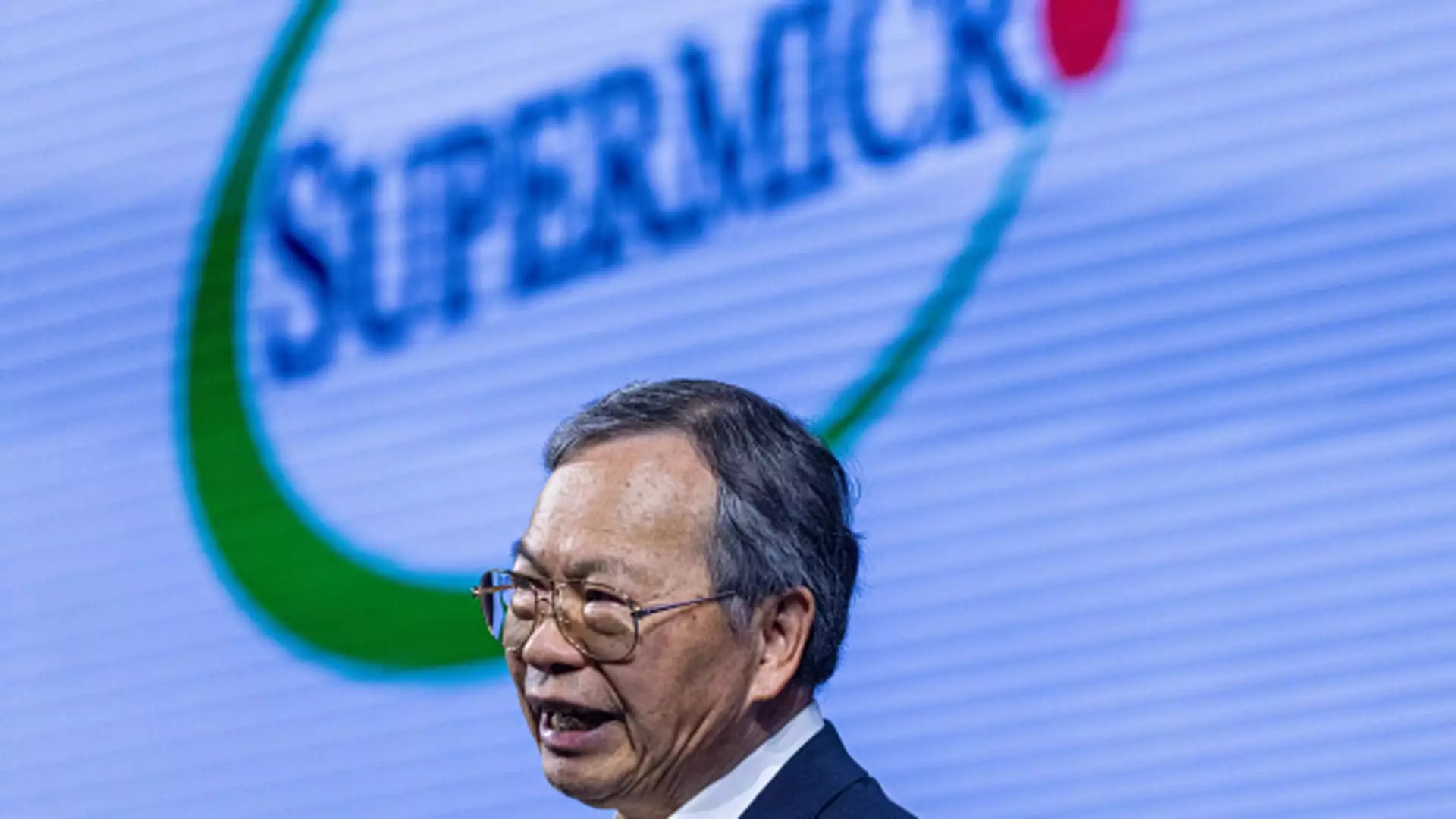Super Micro Computer, a leading player in the server manufacturing domain, recently revealed its much-anticipated financial results after a prolonged delay. This disclosure occurred just before the Nasdaq’s deadline for compliance, showcasing the company’s effort to remain listed amid troubling times. The release of these results was met with a significant market reaction, with shares jumping nearly 19% in after-hours trading — a clear indicator of investor confidence rebounding as the company steps back into the spotlight.
The critical nature of this filing cannot be overstated. Super Micro’s auditor, BDO, expressed in the documentation that the financial statements accurately reflect the company’s fiscal health as of June 30, 2024. This endorsement is vital, especially considering the company’s tumultuous past year, which saw the departure of Ernst & Young as its auditor due to governance concerns. Such a loss signals potential problems within the organization, particularly regarding internal controls and financial oversight. Indeed, the management acknowledged several material weaknesses in internal controls during the audit process, including failures in documentation and the segregation of duties within its accounting framework.
With an aim to rectify these issues, the company announced significant investments in both personnel and technology, hiring additional accounting staff and upgrading its IT systems. However, the past few months have raised numerous eyebrows regarding the overall governance of Super Micro, especially after the controversial resignation of its former chief financial officer, David Weigand. The board’s position that EY’s withdrawal was unfounded raises questions about who can be trusted to guide the company through these challenging times.
Despite these hurdles, Super Micro has shown remarkable resilience. The company’s revenue has skyrocketed, more than doubling to an impressive $14.99 billion in fiscal 2024. This surge can largely be attributed to the booming demand for Nvidia’s graphics processing units (GPUs), a staple for artificial intelligence development. Organizations like Elon Musk’s xAI are increasingly relying on Super Micro’s specialized systems, aligning the company with one of the most exciting technological advancements of our time—AI. This growing market demand presents an opportunity for Super Micro to capitalize on its strengths and expand its footprint within the sector.
However, despite the positive momentum, Super Micro is not entirely out of the woods yet. It has acknowledged multiple risks associated with its delayed financial reporting. These include litigation threats, potential damage to its reputation, and possible downgrades in credit ratings. All these factors could hinder the company’s growth potential, and it must tread carefully. Maintaining investor trust will be paramount as the firm navigates through this transitional period.
Super Micro Computer stands at a critical juncture. While the release of its audited financials has provided a much-needed boost, it also highlights the significant challenges that lie ahead. Governance issues and internal control weaknesses cannot be overlooked, and the company’s strategy for improvement will be scrutinized by market participants and regulators alike. The company remains committed to addressing these shortcomings, but with a surging stock price and growing revenue fresh in investors’ minds, Super Micro has to ensure that it doesn’t take its eye off the fundamentals that support long-term stability and growth.
As it moves forward, the balance between leveraging its booming business in AI technologies and rectifying its internal governance issues will define Super Micro’s trajectory in the years to come. For investors, this presents a mixed bag of optimism blended with caution — a story that is likely to unfold as the company endeavors to reclaim a position of strength in the volatile tech landscape.

